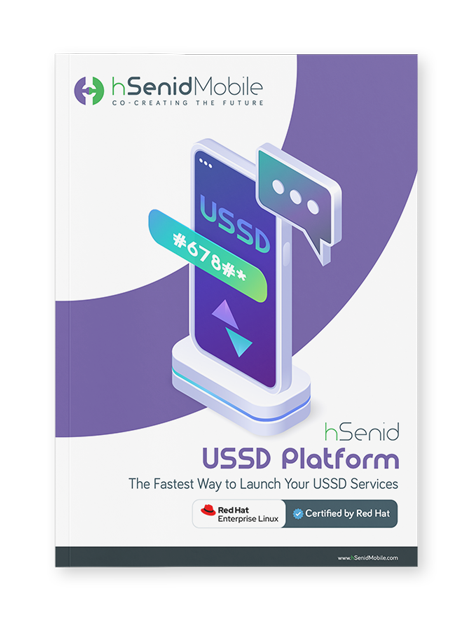In the world of telecommunications, trust is currency. When a customer dials #678#, they expect instant responses, intuitive navigation, and a seamless journey that just works. Yet, for one mobile operator, that trust was shattered when a poorly implemented USSD system spiraled into a nightmare of delays, failed sessions, and mass customer churn.
This story isn’t just about a failed vendor; it’s about how a single technology decision can ripple through an entire operator ecosystem. And more importantly, it’s about how a robust, future-ready USSD Gateway can transform such crises into opportunities for innovation and growth.
The culprit? A low-performing USSD platform that couldn’t handle concurrent sessions or scale dynamically with network traffic.
USSD thrives on real-time responsiveness, and when that breaks, so does user confidence. The operator lost not just transactions but thousands of subscribers who simply switched to more reliable competitors.
That’s the danger of an inadequate USSD provider. It’s not merely a technical issue; it’s a business continuity threat.
In one case study, operators that switched to scalable and IMS-integrated systems reported uptime improvements exceeding 95% (Source: hSenid R&D).
Reliability isn’t optional in telecom; it’s the foundation of every user interaction.
A powerful gateway, such as the one developed by hSenid Mobile, offers several critical advantages:
These capabilities ensure that USSD remains as fast, flexible, and future-ready as any internet-based platform.
In the operator’s failed case, the USSD system lacked dynamic menu rendering and proper session recovery, two features that the hSenid USSD Gateway delivers through advanced menu management frameworks (Source: hSenid R&D).
The secret lay in the AI-powered adaptive menus. The gateway tracked frequently accessed services and surfaced them as “My Favorites,” making navigation intuitive and personalized.
For example, a user who frequently checks their data balance won’t have to scroll through multiple menus; the system brings that option upfront automatically.
AI in USSD also enables:
This isn’t just innovation; it’s empathy at scale.
By integrating the USSD Gateway with IMS (IP Multimedia Subsystem), hSenid eliminates Circuit Switched Fallback (CSFB) issues that plague older systems. This ensures continuous, low-latency communication even on next-gen networks.
The result?
This is what future-proofing truly means—keeping legacy accessibility intact while embracing next-gen connectivity.
With in-built reporting and analytics modules, operators gain visibility into:
These insights allow telcos to optimize campaigns, introduce new offers, and monetize USSD as an engagement channel, not just a utility.
For instance, hSenid’s tag ads feature enables text-based advertisements within USSD messages, turning every interaction into a potential marketing opportunity.
When USSD works flawlessly:
The difference between churn and loyalty often comes down to milliseconds, and hSenid’s optimized gateway ensures every one counts.
Customers who had abandoned the service began returning, drawn by speed, reliability, and simplicity. This wasn’t just recovery; it was reinvention.
But for operators, the difference between success and failure lies in the gateway behind the code.
A poorly built USSD provider can cost millions in lost customers, while a high-performing, AI-driven, 5G-ready USSD Gateway like hSenid’s ensures resilience, revenue, and relevance. So, if you’re an operator still battling timeouts, static menus, or session losses, the question isn’t “Should we upgrade?” it’s “How much longer can we afford not to?”
Explore how the USSD Gateway transforms your operations. Talk to us about implementing this solution today.
This story isn’t just about a failed vendor; it’s about how a single technology decision can ripple through an entire operator ecosystem. And more importantly, it’s about how a robust, future-ready USSD Gateway can transform such crises into opportunities for innovation and growth.
When Latency Becomes a Liability
Picture this: a leading operator in an emerging market launches new prepaid bundles via USSD. Everything looks good on paper. But within days, call centers are flooded with complaints — menus freezing mid-session, incomplete transactions, and error messages like “service not available.”The culprit? A low-performing USSD platform that couldn’t handle concurrent sessions or scale dynamically with network traffic.
USSD thrives on real-time responsiveness, and when that breaks, so does user confidence. The operator lost not just transactions but thousands of subscribers who simply switched to more reliable competitors.
That’s the danger of an inadequate USSD provider. It’s not merely a technical issue; it’s a business continuity threat.
The Real Cost of a “Cheap” USSD Provider
At first glance, opting for a low-cost provider seems practical. But the hidden costs emerge quickly:- Frequent downtime that disrupts mobile money and recharge services
- Slow session management, causing users to drop off mid-transaction
- Lack of network compatibility across 4G and 5G, leading to service fallbacks
- Inflexible menu systems that make simple updates take days or weeks
In one case study, operators that switched to scalable and IMS-integrated systems reported uptime improvements exceeding 95% (Source: hSenid R&D).
Reliability isn’t optional in telecom; it’s the foundation of every user interaction.
The Role of a Robust USSD Gateway
So, what separates a bad USSD provider from a great one? It starts with the USSD Gateway, the core engine that manages signaling, session control, and application routing.A powerful gateway, such as the one developed by hSenid Mobile, offers several critical advantages:
- Seamless multi-network support: Operates across 2G, 3G, 4G, and 5G simultaneously, ensuring uninterrupted service for all user devices.
- Session resumption capabilities: Allows users to continue interrupted sessions without data loss or frustration.
- Integrated AI/ML-driven experiences: Dynamically adjusts menus based on user behavior, reducing complexity and improving satisfaction.
- Open APIs for third-party integration: Enables fintechs, content providers, and marketers to plug into telco systems instantly.
These capabilities ensure that USSD remains as fast, flexible, and future-ready as any internet-based platform.
Why Customers Left: The Anatomy of a Broken Experience
Let’s look at what actually drives user abandonment in poorly managed USSD ecosystems:- Timeouts during balance checks or transfers
- Inconsistent menu navigation, users can’t find what they’re looking for
- No language localization, alienating large rural or multilingual bases
- Zero personalization, every user gets the same static menu
- Non-compliance with 5G-ready standards, leading to fallbacks and failures
In the operator’s failed case, the USSD system lacked dynamic menu rendering and proper session recovery, two features that the hSenid USSD Gateway delivers through advanced menu management frameworks (Source: hSenid R&D).
The Turning Point: Switching to a Future-Ready Solution
When the operator migrated to hSenid’s USSD Suite, the transformation was immediate. The platform’s integrated Gateway, Framework, and Menu Designer modules redefined efficiency:- Menu creation time dropped by over 60% (Source: hSenid R&D) thanks to drag-and-drop GUI tools
- Customer satisfaction rose by more than 40%, measured via real-time feedback through USSD surveys
- Downtime was reduced by 99%, with sessions resuming automatically after interruptions
The secret lay in the AI-powered adaptive menus. The gateway tracked frequently accessed services and surfaced them as “My Favorites,” making navigation intuitive and personalized.
1. The Power of AI & ML in USSD
Artificial Intelligence isn’t just for chatbots; it’s revolutionizing USSD, too. The hSenid USSD Gateway uses AI/ML to study user habits, predict intent, and present the right menu options instantly.For example, a user who frequently checks their data balance won’t have to scroll through multiple menus; the system brings that option upfront automatically.
AI in USSD also enables:
- Predictive personalization based on user frequency and time of access
- Intelligent keyword processing for faster, human-like interactions
- Dynamic menu recommendations, reducing time to task completion
This isn’t just innovation; it’s empathy at scale.
2. USSD Over 5G: Bridging Legacy and Future
As operators decommission 3G networks, maintaining legacy USSD systems becomes unsustainable. The next evolution is USSD over 5G, and hSenid is leading this charge.By integrating the USSD Gateway with IMS (IP Multimedia Subsystem), hSenid eliminates Circuit Switched Fallback (CSFB) issues that plague older systems. This ensures continuous, low-latency communication even on next-gen networks.
The result?
- Seamless connectivity across all radio access technologies
- High-speed interactions, even in dense network conditions
- Scalability for millions of concurrent sessions
This is what future-proofing truly means—keeping legacy accessibility intact while embracing next-gen connectivity.
Beyond Connectivity: Business Intelligence and Monetization
A modern USSD Gateway isn’t just about delivering messages; it’s about unlocking business insights.With in-built reporting and analytics modules, operators gain visibility into:
- Menu traffic by time, region, and device
- Conversion rates for promotions or surveys
- Revenue performance across applications
These insights allow telcos to optimize campaigns, introduce new offers, and monetize USSD as an engagement channel, not just a utility.
For instance, hSenid’s tag ads feature enables text-based advertisements within USSD messages, turning every interaction into a potential marketing opportunity.
Why the Right USSD Gateway Is a Strategic Advantage
A well-designed USSD Gateway doesn’t just improve uptime; it enhances the brand’s entire customer experience ecosystem.When USSD works flawlessly:
- Customers feel connected and empowered
- Agents handle fewer complaints and escalations
- Marketing teams get better engagement rates
- Finance sees lower operational costs and higher ROI
The difference between churn and loyalty often comes down to milliseconds, and hSenid’s optimized gateway ensures every one counts.
Case Reflection: From Churn to Growth
Within six months of adopting hSenid’s USSD Gateway, the operator that once struggled with churn regained customer trust. The tangible results spoke volumes:- 45 million plus transactions per day handled effortlessly
- 15,000 plus transactions per second supported under peak loads
- 99.9% uptime maintained consistently
Customers who had abandoned the service began returning, drawn by speed, reliability, and simplicity. This wasn’t just recovery; it was reinvention.
Conclusion: The Hidden Power of Doing USSD Right
USSD is far from obsolete; it’s evolving. In regions where smartphones aren’t universal and data costs remain high, USSD continues to power mobile banking, top-ups, and essential digital services.But for operators, the difference between success and failure lies in the gateway behind the code.
A poorly built USSD provider can cost millions in lost customers, while a high-performing, AI-driven, 5G-ready USSD Gateway like hSenid’s ensures resilience, revenue, and relevance. So, if you’re an operator still battling timeouts, static menus, or session losses, the question isn’t “Should we upgrade?” it’s “How much longer can we afford not to?”
Explore how the USSD Gateway transforms your operations. Talk to us about implementing this solution today.








